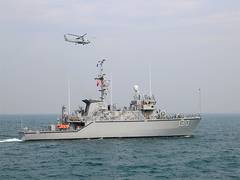The delicate balance in the Taiwan Strait Tensions has once again been underscored by a significant uptick in Chinese military activity, prompting swift responses from Taiwan’s Ministry of National Defense (MND). These recent maneuvers highlight the persistent and escalating challenges to stability in one of the world’s most sensitive geopolitical flashpoints.
Key Developments in Taiwan Strait Tensions:
- Recent Incursions: As of the morning of July 19, Taiwan detected a substantial presence of Chinese military assets around its territory.
- 18 Chinese Military Aircraft: These sorties included various types of aircraft, signaling a broad aerial presence.
- 8 Chinese Naval Vessels: Accompanied by the aircraft, these vessels navigated the waters near Taiwan.
- 1 Official Ship: An additional official Chinese vessel was also noted in the vicinity.
- Median Line Breaches: A concerning aspect of these incursions was that a significant number of the detected aircraft—specifically 15 out of 18 sorties—crossed the median line of the Taiwan Strait.
- These aircraft entered Taiwan’s central and southwestern Air Defense Identification Zone (ADIZ), marking a direct challenge to Taiwan’s claimed airspace.
- Taiwan’s Immediate Response: In response to these activities, Taiwan’s armed forces have demonstrated their readiness and resolve.
- Deployment of Aircraft and Naval Ships: Taiwanese military aircraft and naval vessels were immediately dispatched to monitor the situation closely.
- Coastal-Based Missile Systems: Shore-based missile systems were also deployed, underscoring Taiwan’s defensive posture and capability.
The Broader Context of Taiwan Strait Tensions:
This latest round of military activity by Beijing is not an isolated incident but rather part of a broader, sustained pattern.
- Increased “Gray Zone” Tactics: Since September 2020, China has notably increased its use of “gray zone” tactics. This involves incrementally escalating military aircraft and naval vessel operations around Taiwan, falling short of direct armed conflict but designed to exert pressure and wear down Taiwan’s defenses.
- Han Kuang Drills: The recent Chinese maneuvers also coincide with Taiwan’s annual Han Kuang military drills, their largest and longest-ever, designed to simulate defenses against a potential invasion. This suggests that Beijing’s actions could be a direct response or an attempt to disrupt these critical exercises.
- The drills focused on prolonged defensive operations, including securing airfields, urban warfare, and utilizing subway systems for troop movement.
- New U.S.-supplied weapons systems, such as HIMARS and TOW 2B anti-tank missiles, made their debut in these exercises.
- Taiwan’s Stance: Taiwan’s Vice President Hsiao Bi-khim has consistently reiterated Taiwan’s commitment to national security and regional stability, emphasizing that Taiwan will not provoke confrontation but will continue to invest in self-defense capabilities to deter any miscalculation.
Why Taiwan Strait Tensions Matter:
The ongoing military maneuvers in the Taiwan Strait have far-reaching implications, extending beyond the immediate region.
- Geopolitical Stability: The Taiwan Strait is a critical international waterway, and any significant escalation could disrupt global trade and security.
- International Concerns: Nations worldwide, including the United States and Japan, have expressed growing concerns over China’s assertive military posture and its potential impact on Indo-Pacific security.
- Deterrence and Readiness: Taiwan’s continuous efforts to enhance its defensive capabilities are crucial for maintaining peace and deterring any attempts at annexation by force.
As the situation evolves, international observers remain vigilant, highlighting the imperative for dialogue and de-escalation to prevent any further worsening of Taiwan Strait Tensions and ensure stability in this vital part of the world.
Discover more from RastriyaSamachar24x7
Subscribe to get the latest posts sent to your email.




